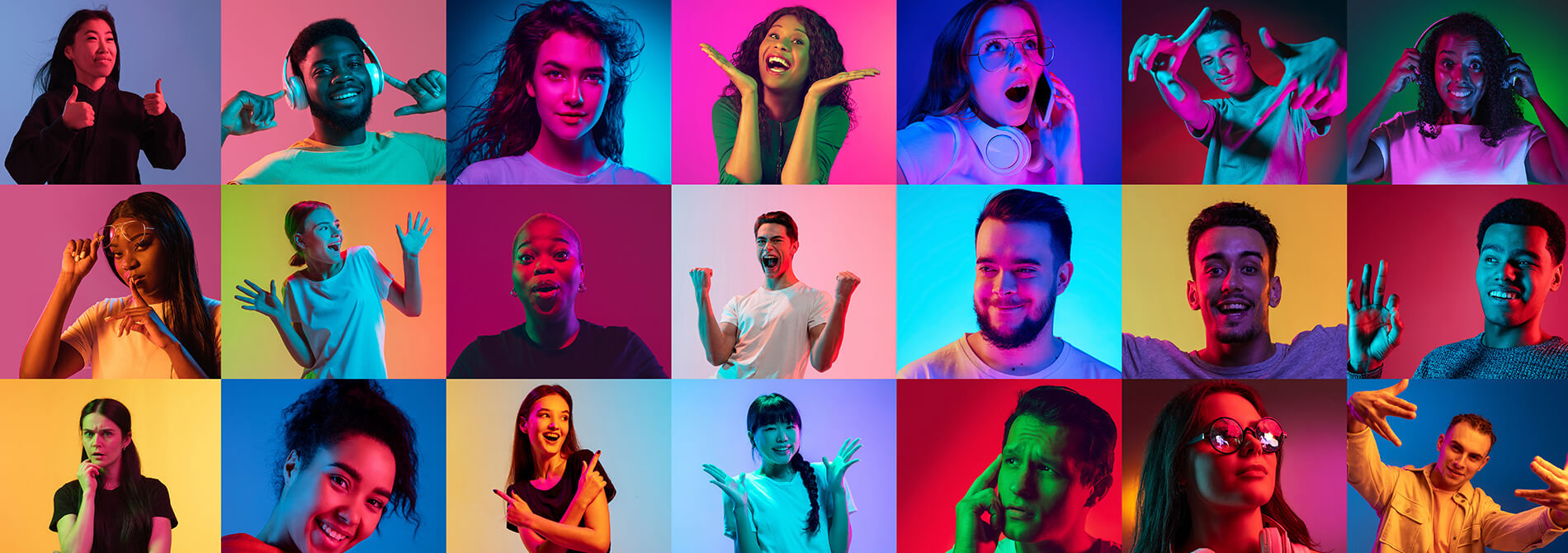Instagram Engagement Rate Benchmark
Monthly historical data

Instagram Benchmarks
Public vs Private Engagement Rate on Instagram
You don’t need us to tell you that engagement on Instagram is volatile. One post goes off and another one languishes and there’s sometimes no tangible explanation why. In saying that, social analytics can play a key role in identifying the individual actions that drive performance for your posts. This is why we’ve developed both public and private Engagement Rate benchmarks for Instagram.
As the names suggest, the Public Engagement Rate benchmark is based on publicly viewable Instagram metrics (Likes + Comments divided by Followers) whereas the Private Engagement Rate benchmark is based on privately viewable metrics (All 4 Engagements divided by Reach). Check out the full calculations below.
Average Instagram Public Engagement Rate last month
Each month we publish the average Instagram Public and Private Engagement Rate benchmarks based on the hundreds of thousands of Instagram posts from all around the world indexed by Social Status.
The Public Engagement Rate average comes from our Competitor Analytics tool which enables performance tracking of Business and Creator profiles on Instagram. The Private Engagement Rate average comes from our Profile Analytics tool which enables performance tracking of all metrics (public & private) for Business and Creator Instagram Profiles you admin.
The average Public Engagement Rate on Instagram last month was:
The average Private Engagement Rate on Instagram last month was:
How has the Instagram Engagement Rate changed over time?
This chart shows the historical Instagram Public Engagement Rate for the past year:
This chart shows the historical Instagram Private Engagement Rate for the past year:
As you can see, the monthly averages are seldom static and the public and private rates don’t always move in unison so ensure you’re comparing the correct benchmark against the Engagement Rate you see in Social Status.
Highest engaged posts on Instagram
Below are the highest engaged posts on Instagram last month. Use the Time Interval dropdown to see previous months. These posts have the highest Public Engagement Rate across hundreds of thousands of Instagram posts published last month. You can tap the date on any post to open it directly on Instagram:
How to calculate Engagement Rate on Instagram
There are four different ways to calculate the Engagement Rate (ER) on Instagram
Unfortunately there is no “right or wrong” way to calculate it – just different approaches.
Let’s run through them…
1. Public Engagement Rate
This is the most common method since it’s used to benchmark against competitors. Remember with the Public Engagement Rate you’re limited to just the publicly viewable interactions only. For Instagram this is Likes and Comments:
Post ER = (Likes + Comments) divided by Followers
Profile ER = Average of all Post ER’s during the given time interval (ie: last month)
Notice how we divide by Followers (not Reach). This is because Reach is a private metric and not available publicly. Reach can only be seen by the owner of the profile or others with admin access. This is why we divide the public Interactions by the Followers.
2. Private Engagement Rate
This is the true way to calculate the Instagram Engagement Rate and its what we recommend for benchmarking your own performance historically over time:
Post ER = (Likes + Comments + Saves + 3-sec Video Views) divided by Reach
Profile ER = Average of all Post ER’s during the given time interval (ie: last month)
3. Private Engagement Rate (Likes & Comments only)
Some marketers base their ER on the Likes & Comments only:
Post ER = (Likes + Comments) divided by Reach
Profile ER = Average of all Post ER’s during the given time interval (ie: last month)
The rationale for this is that Likes and Comments are real interactions whereas Saves are not only hidden from public view but also behave as more of a “bookmarking” function than an advocacy action. As for Video Views, no physical action takes place but one could argue that someone watching more than 3 seconds of a video is indeed engagement in itself.
4. Private Engagement Rate (based on Impressions)
Some marketers base their ER calculation on Impressions instead of Reach:
Post ER = (Likes + Comments + Saves + 3-sec Video Views) divided by Impressions
Profile ER = Average of all Post ER’s during the given time interval (ie: last month)
This is probably the least common approach. By dividing by Impressions, you’ll end up with a lower Engagement Rate which is probably not the best thing!
What affects the Instagram Engagement Rate?
There are many factors which affect the performance of Instagram posts organically, here are just a few:
– The way people interact with your content (likes vs comments vs saves)
– Posting different media types (photos vs carousels vs videos)
– Changes to the Newsfeed algorithm
– Posting about different themes and subjects
– When you post (day and time)
– Tagging others in the post and/or using hashtags

Social Media Analytics
Voted Best By You

- Quick Setup in Seconds
- Transparent Pricing
- Easy Monthly Billing, No Contracts
- Responsive Customer Support
Let’s Spill The Tea
Social Status Insights
Get our monthly social benchmarks, updates and tips via email


